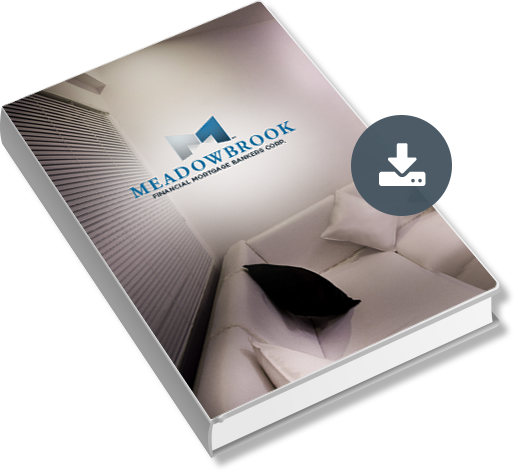Search Blog Posts by Blog Topic
Paying Your Rent on Time can Improve Homeownership Odds
October 23, 2021
Until the recent past, your regular payments did not play any role in your ability to qualify for a home mortgage. Fortunately, that has changed owing to a recent announcement by the Federal Housing Finance Agency (FHFA). Now, Fannie Mae will require that lenders consider borrowers’ rent payment histories during the underwriting process.
What Has Changed?
Fannie Mae implemented an update to Desktop Underwriter (DU) – an automated underwriting system that helps mortgage providers make informed lending decisions on government and conventional loans – during the third weekend of September 2021. All the changes are meant to apply to case files that are submitted or resubmitted after this update.
An important change owing to this update is that positive rent payment history has been added to DU’s risk assessment.
How Will It Work?
If your existing monthly rent is $300 or more, and if a mortgage provider obtains a 12-month Verification of Asset (VOA) report, DU will aim to highlight regular rent payments within the report so they may be used in your risk assessment. The new risk assessment system will apply to your case file if you meet these criteria:
- You’re a first-time homebuyer
- You have been living on rent for 12 months or more
- You pay at least $300 as rent each month
- You will use proceeds from the home loan toward a purchase transaction
- You will use the property you purchase as your principal residence
- You have a credit score
- Your lender obtains a VOA report that includes bank statement data of 12 months through an authorized DU validation service verification report vendor.
In case DU identifies a rent payment pattern in your bank account data, it will use the information to aid in your credit risk assessment. To make sure that DU identifies your rent payments, your mortgage provider needs to:
- Mention your monthly rent in the DU loan application
- Get a 12-month VOA report and use the relevant Reference ID in the DU loan application
- Ensure that the bank account from which you pay rent is in your name and that it finds a mention in the VOA report
Why This Change?
According to Fannie Mae, it has implemented this change in credit risk assessment with the aim of improving borrowers’ homeownership odds. Until now, limited credit history has worked as a barrier for many probable homeowners even if they’ve maintained an excellent rent payment history. While rent reporting through different reporting programs can help improve credit scores, not many landlords report rent payments to credit bureaus. Consequently, renters see no positive effect of their regular rent payments on their credit scores. With the new change, this should no longer be a problem as DU will attempt to detect rent payment histories through applicants’ bank accounts.

What You Need to Know About Mortgage Underwriting
As a first-time homebuyer, it is important to understand how the mortgage underwriting process works, as it gives you means to improve your odds for approval. The underwriting process begins only after you’ve narrowed down on a house, a lender, and a mortgage. It requires that you agree to the loan estimate provided by your lender and is indicative of your intent to proceed.
The main aim of mortgage underwriting is to ensure that a borrower and the property in question meet the loan’s requirements. While an underwriter might approve or deny your application, you might also receive a suspended verdict that comes with further requirements for reactivation.
Even though you might have gone through a preapproval process that entails a preliminary credit check, an underwriter is tasked with carrying out an in-depth credit check and quoting an interest rate. During this stage, you need to provide different types of financial documentation. For instance, while paystubs help confirm your income, bank statements offer insight into your existing financial condition and help determine if you have adequate funds to cover for your loan’s closing costs.
The Underwriter’s Role
Depending on the requirements of your application for credit, an underwriter may follow different measures. These include:
- Investigating credit history. This step involves checking your credit score and taking a close look at your credit reports. Underwriters check for aspects such as credit utilization ratio, late payments, and bankruptcy rulings.
- Verifying employment and income. An underwriter will go through the documents you provide to verify your employment status and income. If required, the underwriter may call your employer to verify the same.
- Checking your DTI ratio. An underwriter compares your existing debts with your income to determine if you have access to enough money to keep up with your mortgage payments. Calculating your debt-to-income (DTI) ratio requires that you add your monthly debt payments and divide the total by your gross monthly income. From an underwriter’s perspective, the higher your DTI ratio, the more likely you are to default on your mortgage repayments.
- Verifying savings and down payment. You may expect your underwriter to take a look at your savings accounts. This is to ensure that you have adequate funds to supplement your income temporarily and to establish if you have enough money to put toward your down payment.
- Ordering an appraisal. It is the underwriter’s responsibility to order a home appraisal. This step helps determine if the desired loan amount for the property in question matches its actual market value.
Manual Vs. Automated Underwriting
Depending on the mortgage provider you select, the underwriter responsible for assessing your application might choose to proceed manually or use an automated underwriting program. While automated underwriting is typically faster, it comes with some limitations. For example, using automated underwriting software might not be the best idea when assessing applications of people who have inconsistent incomes. In some instances, underwriters gauge risk by using a combination of manual and automated underwriting.
How Much Time Does the Process Take?
Depending on how streamlined a lender’s underwriting process is, how busy a lender is, and whether or not the underwriter handling your case file requires additional information, the process might take anywhere from a few days to a few weeks. Typically, you may expect a loan application to close completely in around 30 to 50 days. How long it takes to close a loan application may well be a standard for selecting a lender.
Possible Outcomes
At the end of the underwriting process, you may receive one of the following decisions:
- Conditional approval. This implies you may need to submit additional documents such as tax forms, pay stubs, or proof of mortgage insurance. In some instances, underwriters might want to verify sources of large down payments. Once you meet the requirements, your underwriter approves your application.
- If your application is missing important documentation, making it impossible for an underwriter to verify the information you’ve provided, the underwriter might suspend your application. In this scenario, you need to provide the required documentation/information for the lender to reactivate your application.
- An underwriter might deny your application after going through your employment and financial information in detail even if you’ve been previously preapproved. You may take remedial measures depending on why your application is denied. Some of the reasons why an underwriter might deny your application include missing information in your application, a low credit score, no credit history, and a small down payment.
What You Need to Know About Getting a Mortgage
While different aspects require your attention when buying a home, getting a suitable mortgage remains among the most important. As a first-time homebuyer who’s looking for a mortgage, it is crucial that you abide by these tips.
Determine How Much You Can Afford
The first step of getting a mortgage is determining how much you can afford. This involves accounting for your income, assets, expenses, debt, the desired location, and your creditworthiness. You also need to consider the down payment, closing costs, and relocation expenses. While conventional wisdom suggests that you put 20% of a home’s selling price toward the down payment, requirements vary for different types of mortgages. For instance, some government-backed mortgages require no down payment at all.

Check Your Credit, Strengthen It if Required
Check your creditworthiness by going through your credit reports. You get access to free copies from the top three credit bureaus in the country – TransUnion, Experian, and Equifax. If you find any errors, contact the credit bureaus in question to get them fixed, as they might have an adverse effect on your credit score.
If you don’t have good or excellent credit, work on strengthening it by following different measures. These include making all your repayments on time, bringing down your credit utilization ratio, and limiting how often you apply for new forms of credit.
Looking to Purchase a Home on Long IslandContact Us
Identify Your Alternatives
First-time homebuyers have the option of applying for conventional mortgages. However, they might qualify for other types of mortgages based on different eligibility criteria.
- USDA Loans. Backed by the United States Department of Agriculture (USDA), you might qualify for a USDA loan to buy a home in a rural area or in eligible suburban areas of cities (typically the outskirts). You might also qualify with less-than-perfect creditworthiness and low to moderate income.
- VA Loans. The U.S. Department of Veterans Affairs (VA) acts as a guarantor for VA loans. These loans are made available to military veterans, those still in service, select surviving spouses, as well as reservists. They come with lower-than-usual interest rates.
- FHA Loans. FHA loans are insured by the U.S. Federal Housing Administration. According to the Consumer Financial Protection Bureau (CFPB), borrowers with 10% to 15% down payment and good credit scores typically find conventional loans to be more cost-effective than FHA loans, whereas people who wish to make smaller down payments and have lower credit scores might benefit more by going the FHA loan way.
Compare Multiple Lenders
Narrow down on the top mortgage providers based on the type of loan you wish to get. Then, look at more than just the interest rates on offer. Other aspects that need your attention include different fees you might need to pay, flexibility in the loan’s terms, as well as the level of customer service the lender provides.
Get Preapproved
A prequalification involves an informal evaluation of your finances and comes with an estimate amount that a lender is willing to provide. A preapproval, on the other hand, requires delving deeper into your financial information and looks at your credit score, bank statements, and W-2s. As a result, this step gives you a more accurate number surrounding how much money you qualify to borrow.
Since getting preapproved gives you a clear indication of how much money you may borrow, you get to look for homes accordingly. A preapproval letter also works well in the eyes of real estate agents and sellers, as they know you’re serious about the process. Besides, once you have a preapproval in place, you minimize the possibility of getting nasty mortgage-related surprises down the down.
Mistakes You Need to Avoid
Here are some common home buying mistakes you need to avoid:
- Looking at homes before considering your mortgage alternatives
- Going over your budget
- Using all your savings for the down payment
- Dipping into your retirement fund for the down payment
- Making emotion-based decisions
Looking to Purchase a Home on Long IslandContact Us
Conclusion
The recent update to DU implemented by Fannie Mae serves as great news for a number of renters who are hoping to become homeowners – given that their regular rent payments will now play a role in their credit risk assessment. However, if you wish to buy a home in the near future, it is crucial that you start getting your finances and creditworthiness in order because these play important roles in the underwriting process.
Given that there is more to buying a house than getting a mortgage, going through Meadowbrook Financial Mortgage Bankers’ First Time Homebuyer’s Guide might be worth your while.
Ready To Get Started?
Fill out the form below and a mortgage professional will get back to you shortly.

First Time Homebuyer’s Guide
Considering homeownership but not sure where to begin? The Meadowbrook Financial Mortgage Bankers Corp. guide to home buying will make the process easy all in one packet.
Recent Articles

Should You Buy an Under-Construction, New Build, or…
18 June, 2025The dream of owning a home often comes with having to make an array of decisions, and perhaps none is more crucial than choosing the…

How Do Pets Influence Homebuying?
1 May, 2025Adding a furry friend to your family can bring so much joy to your life. Whether it’s a dog, cat, bunny, or other, they’re sure…

Tips to Speed Up Closing on a House
1 April, 2025When you find your dream home, you want your next chapter to begin as soon as possible! Closing on a house is certainly a process…


